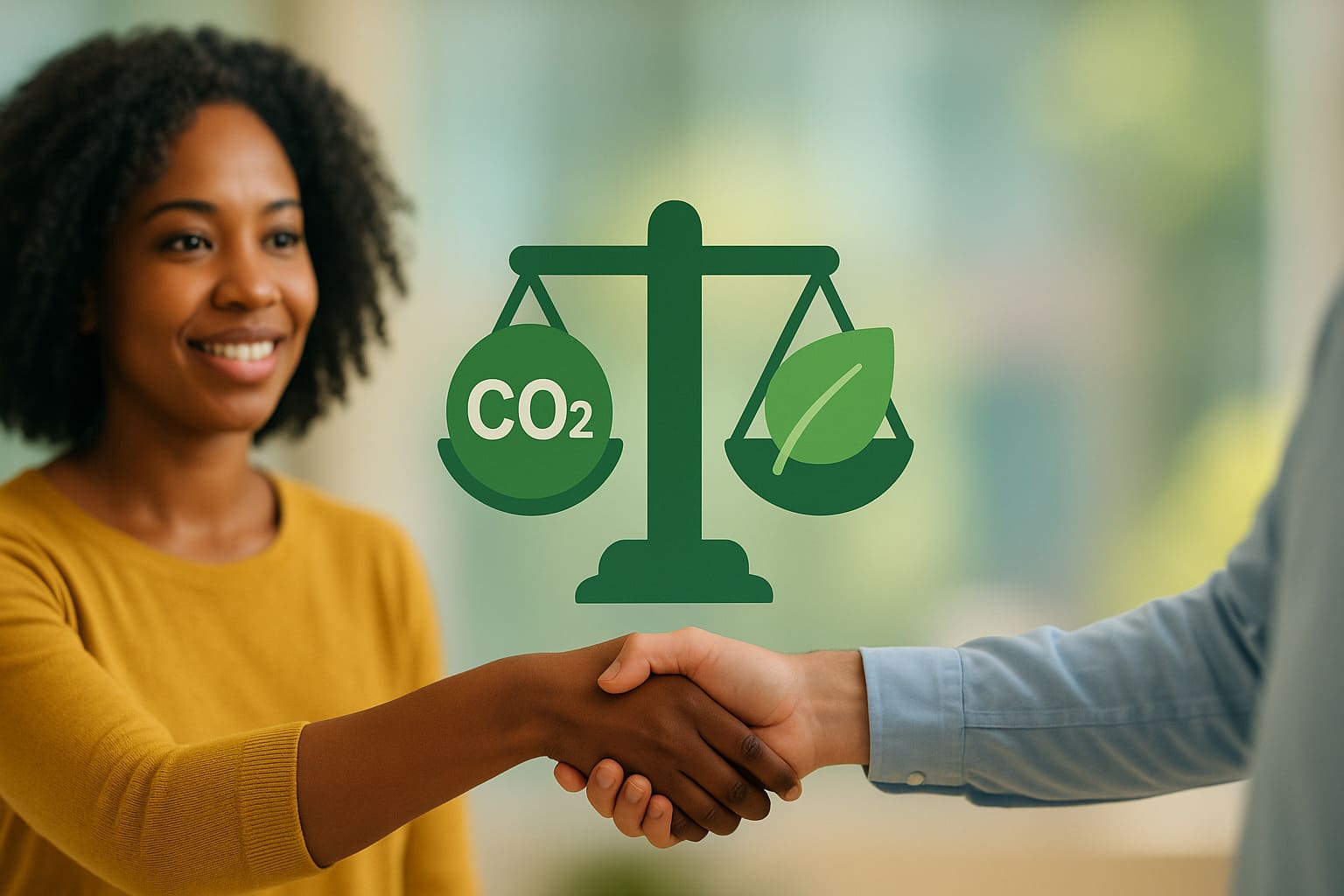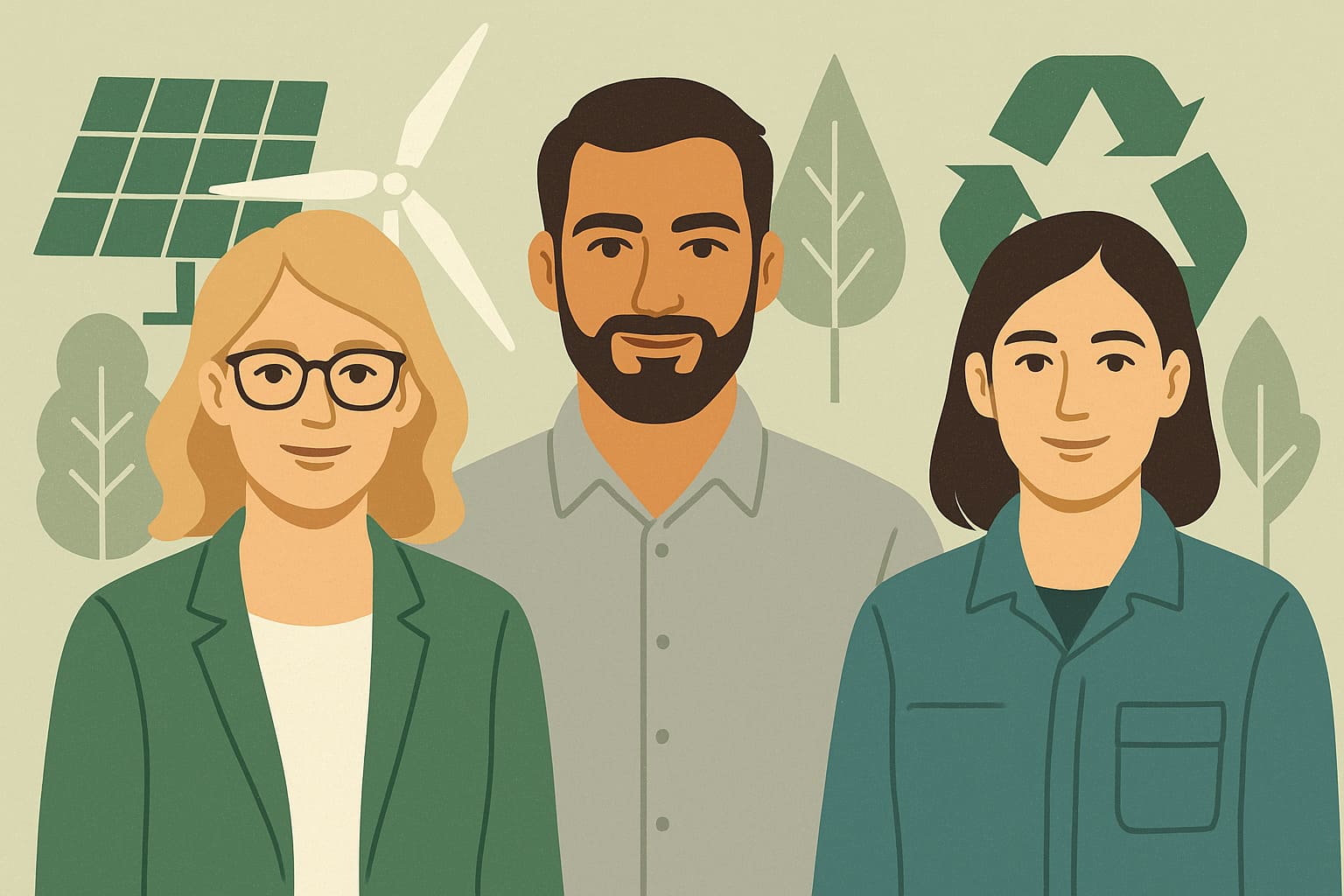Imagine you’re sipping your morning coffee and scrolling through the news when you spot a story about a company planting thousands of trees to fight climate change. You wonder if those efforts really make a difference or if there’s more you could do in your own life. That’s where the idea of carbon neutrality comes in. It’s a term you’ve probably heard a lot lately but what does it actually mean for you and the planet? Let’s break it down and see why it matters now more than ever.
What Is Carbon Neutrality?
Carbon neutrality means you don’t add more carbon dioxide to the air than you take away. Your actions, like driving a car or using electricity, can put carbon into the air. Plants, like trees, pull carbon back out when they grow. This balances things out.
Do you wonder how you can balance your own carbon? You can plant a tree, ride a bike, or use less energy at home. For example, some families use solar panels. Others turn off lights when not needed.
Businesses try to be carbon neutral by changing how they work. Some use green energy. Others recycle or use less plastic. Your favorite shoe brands and coffee shops sometimes help plant trees. Have you ever heard a company say they’re “offsetting” carbon? That means they help pay to reduce carbon in other ways if they can’t lower it themselves.
Being carbon neutral helps keep Earth clean. You, your friends, and even big groups can help. Isn’t it nice to know small steps make a difference?
How Carbon Neutrality Works
Carbon neutrality means giving back as much as you take from the air. Think about turning off a light or walking instead of taking a car. Small choices help make a big change. Want to be a climate helper? Let’s see how it happens step by step.
Key Principles of Carbon Neutrality
First, you find out how much carbon you use. When you ride the bus, charge your phone, or eat food, you use energy. That energy makes carbon. Companies count this too by checking lights, trucks, or big machines.
Next, people try to use less carbon. Some ride bikes or plant trees in their yards. Others use clean power, like solar or wind. Businesses change by using less plastic or picking local food for lunchrooms.
There’s always some carbon left. You can’t make it zero on your own. Can you think of times you had to use a car or heater because you had no choice?
After that, you try to balance what’s left. This means helping a forest grow or paying for new green energy in places that need it. If you give back as much as you use, you reach “carbon neutral.”
The Role of Carbon Offsetting
When you can’t stop all carbon, you can help in other ways. Offsetting means you support big projects that take in carbon somewhere else.
Some people plant trees. A company might pay for a windmill in another country. Maybe your school could care for a garden that helps clean the air.
Every bit helps. If you flew on a plane, could you help save a forest after? Yes, and that counts toward carbon neutrality. Ask yourself, how can your daily choices add up too?
Working together, everyone can be a carbon hero—at home, at school, or at work. Isn’t that a goal worth sharing?
Benefits of Achieving Carbon Neutrality
Helping Our Earth Stay Healthy
When you aim for carbon neutrality, you help slow down global warming. Can you imagine big cities with clean air to breathe? Carbon neutrality keeps harmful gases out of the air. Fresh air lets you, your friends, and plants grow strong. Kids can spend more time playing outside, and animals can keep their homes safe in the woods and in the sea.
Saving Money and Making Jobs
Switching to new green jobs can put more money in your pocket. For example, building solar panels or windmills brings new work to your neighborhood. People who fix bikes or electric cars can help families travel in cleaner ways. Think about a local shop that uses both sun and wind energy—it can save money by using less power from dirty sources.
Bringing People Together
Working for carbon neutrality helps people in every country join forces. When many towns recycle or grow trees, it’s like a big team game. If you and your friends each plant a tree, imagine how fast a whole forest could grow! Teams from different places share their ideas so everyone gets smarter about caring for the planet.
Making Companies and People Look Good
When your school, family, or even your favorite stores work to lower their carbon, they get noticed. Friends and neighbors see your good choices. Maybe you try using a reusable water bottle or take the bus. Stores that help the Earth draw in more happy customers, just like you want to play with kids who take care of their toys.
Opening Doors for New Ideas
Trying new ways to help the Earth inspires everyone to invent. Kids might dream of robots that plant trees. Adults might build new bikes or houses that stay cool without much energy. Did you ever think of a way to save power at home? These ideas make life easier and the Earth safer.
Every Step Counts
Even small things like turning off lights or picking up trash help move us closer to a cleaner industry. Have you asked your family what you can do at home? Each choice you make adds up. You and your neighbors can make a big change by caring about how much carbon you let go in the air.
Challenges in Reaching Carbon Neutrality
Doing your part for carbon neutrality takes work. It’s not always easy. It helps to know what can get in your way. You might see some of these in your daily life or at work.
Common Barriers for Individuals and Businesses
Measuring emissions can be tricky. Do you know how much energy you use at home or how often you drive? It isn’t simple to add up all these numbers. Businesses may track electricity or gas, but what about deliveries, air travel, or making products? Keeping count gets hard fast.
Costs can hold people back. Want to put solar panels on your roof? The price is high. Companies may spend extra to buy green energy or pay for carbon offsets. Not everyone can afford it. Have you ever wanted to make a green change, but money got in the way?
Some tech isn’t ready yet. If big trucks burn diesel fuel, what can replace that? Airplanes, factories, and farms often run on old systems. Sometimes the tools to cut pollution don’t exist yet or cost too much.
Changing habits feels hard. Using less, reusing old things, or trying new fuels takes effort. Companies may worry people will not like different products. Have you tried skipping a car ride or buying less plastic? How did it go?
Supply chains spread out the problem. When a company sells a shirt, did it count the cotton farm, the shipping, or the shop’s lights? All of these add carbon. If you buy something, do you think about where it came from? For businesses, tracking every tiny part is tough.
Criticisms and Limitations of Carbon Neutrality
Many plans lean too much on offsets. Some groups promise net zero by paying for tree planting instead of cutting their own pollution. Does buying tree credits feel as strong as making real changes at home?
Not everyone checks the math. Good programs have strong checks like rules for how much carbon gets saved. But some do not. Would you trust a label if you could not see how they got the numbers?
Carbon neutrality only covers one gas. There’s carbon dioxide, but don’t forget methane from cows or nitrous oxide from farms. Focusing only on CO2 skips other problems.
Greenwashing tricks people. Some ads say “carbon neutral” even if little was done. If a company just buys offsets and does not cut pollution, is it fair?
Trying for carbon neutrality is a big job. You can make a difference—even small steps count. Have you thought about what barrier you’d break first?
Steps Toward Becoming Carbon Neutral
Becoming carbon neutral means you make sure you don’t add more carbon to the air than you take away. Everyone can help, even if it feels like a big job. What can you do first? Here’s a simple plan.
First, find out how much carbon you use each day. You use energy when you turn on the lights, ride in a car, or eat food made far away. Try counting the things you do that use gas, oil, or coal. Maybe you fly on planes for trips, or maybe you leave lights on in empty rooms. Have you ever asked yourself which activity you do most?
Next, look for ways to use less energy and make less carbon. You can turn off lights when you leave a room. Walk or ride your bike instead of riding in a car sometimes. Try using fans instead of air conditioning on cool days. Some kids like to help plant trees, clean up a park, or grow a garden. What small step can you try today at home or at school?
When you can’t stop all your carbon, you can help balance it out. Some people buy “carbon credits.” This means you pay money that helps plant more trees or make clean electricity. Companies do this too. Some families or groups save up and buy a big, leafy tree for their yard or donate to a forest group. Think about what works best for you.
Nature is your friend when it comes to soaking up carbon. Forests, grassy fields, and the ocean can all pull carbon out of the air. Try learning about local parks and see if you can help keep them healthy. Planting one tree does make a difference!
Last, share what you learn about using clean energy. Tell friends about cool things like solar panels or wind turbines. Some families buy their power from wind or solar farms. Teachers may invite local experts to share green tips with your class. Can you teach someone you know one fun fact today?
Every step, even the small ones, helps the industry get a little cleaner and greener. When you start to make changes, others may follow. What new idea will you try first?
Conclusion
Taking steps toward carbon neutrality isn’t just about big changes—it’s about making thoughtful choices every day. When you pay attention to your habits and look for small ways to cut emissions, you’re already making a difference.
Your actions can inspire others and help build a cleaner industry for future generations. By staying informed and taking part in local or global efforts, you’re showing that everyone has a role to play in protecting the planet.

